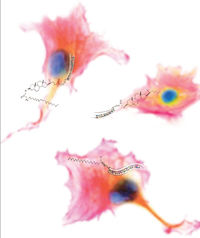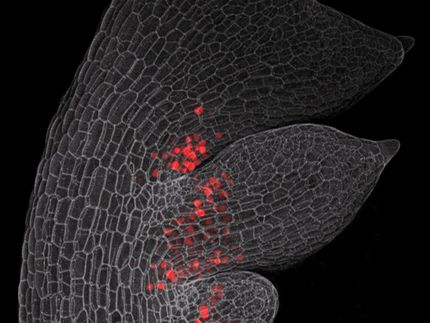Genome sequence of small marine creature sheds light on vertebrate origins
Advertisement
Genome Research is publishing several papers related to analyses of the amphioxus (Branchiostoma floridae) genome sequence. The amphioxus, or lancelet, is a cephalochordate residing in shallow regions of tropical and temperate seas, bearing resemblance to a small fish, however lacking pairs of eyes, limbs, and ears. A member of the chordata phylum along with tunicates (sea squirts) and vertebrates, amphioxus lacks the backbone or spinal column characteristic of vertebrate animals, yet shares the same basic body plan. Amphioxus is therefore an excellent model for investigating how vertebrates evolved from an invertebrate ancestor. Now, researchers are finding that the amphioxus genome sequence is revealing new insights into vertebrate origins and the evolution of complex biological systems, such as immunity and nervous system development. Primary research reports describing these novel findings are published online June 19, concurrent with publication of the amphioxus genome sequence report in the journal Nature.
Primitive pre-vertebrates are still evolving
To investigate the origins of vertebrates and other features of cephalochordate biology, a team of researchers led by Dr. Linda Holland of the Scripps Institution of Oceanography searched the amphioxus genome for specific genes, gene families, and DNA elements that could shed light on chordate biology and evolution. The analysis identified a number of features of amphioxus that are conserved with vertebrates, as well as some that are unique. In addition to new insights on development, cell signaling, immunity, and endocrine systems, Holland and colleagues identified several DNA regulatory elements conserved between amphioxus and humans. Three conserved elements from two human paralogs and a single amphioxus homolog were all shown to drive gene expression in both amphioxus and the mouse. "This is the widest phylogenetic distance to date over which both the sequence and function of cis-regulatory enhancers has been found to be conserved," explains Holland. The group concluded that while amphioxus displays many characteristics of a pre-vertebrate ancestor, it also has specialized features that have developed since diverging from chordate ancestors.
Original publication: Holland, L.Z., et al.; "The amphioxus genome illuminates vertebrate origins and cephalochordate biology."; Genome Res. 2008.
Exploring the evolution of vertebrate innate immunity
The immune system of vertebrate animals consists of two components: the innate immune response, a constitutive system ready to respond to a pathogen, and the adaptive immune response, a system of immunological memory that responds to previously encountered pathogens. In a study led by Dr. Anlong Xu of Sun Yat-sen University, scientists searched the amphioxus genome for genes that may be relevant to immunity in order to gain an understanding of what the immune system repertoire of the vertebrate ancestor may have looked like. "Our chordate ancestors had a remarkably elaborate innate immune system, but this system was somehow reduced in the vertebrate lineage, which is unusual to our conventional thinking of the immune system," explains Xu. Furthermore, Xu notes that this work helps to describe a global picture of innate immunity and uncover the evolutionary footsteps underlying the evolution of human immune pathways.
Original publication: Huang, S., Yuan, S., Guo, L., Yu, Y., Li, J., Wu, T., Liu, T., Yang, M., Wu, K., Liu, H., Ge, J., Yu, Y., Huang, H., Dong, M., Yu, C., Chen, S., Xu, A.; "Genomic analysis of the immune gene repertoire of amphioxus reveals extraordinary innate complexity and diversity." Genome 2008.
Hijacking of neural crest genes
In vertebrates, the peripheral nervous system and the craniofacial skeleton develop from a specific set of cells, known as neural crest cells. In this report, researchers in the laboratory of Dr. Marianne Bronner-Fraser at the California Institute of Technology have used the amphioxus genome sequence to investigate how this vertebrate-specific cell type evolved from an invertebrate ancestor. The group found genes in amphioxus that are similar to vertebrate genes related to neural crest cells, however in cephalochordates they are used for other functions. This finding raises the intriguing possibility that during vertebrate evolution, these genes may have "hijacked" for the development of neural crest cells.
Original publication: Yu, J.-K., Meulemans, D., McKeown, S., and Bronner-Fraser, M.; "Insights from the amphioxus genome on the origin of vertebrate neural crest." Genome Res. 2008.




















































